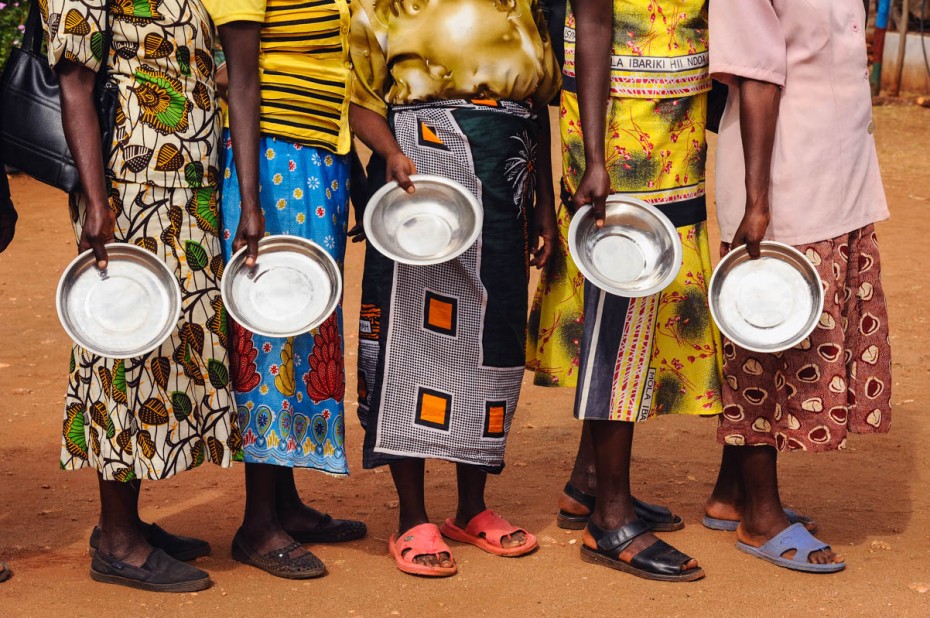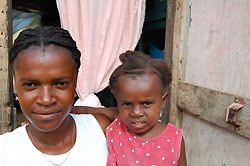Drought in Ethiopia: A Déjà vu Famine?

Despite significant economic growth over the past decade, Ethiopia still remains one of the world’s poorest countries and is yet again threatened with food insecurity in different parts of the country due to El Niño. Beyond food relief – a noble act in itself since a hungry child does not know the word ‘tomorrow’ – what must we do today to ensure that that there is food tomorrow?
Continue Reading ›Fighting Famine with Innovation
Faced with 5 years of drought and famine, this Kamwaa Child Development Center in Kenya changed the future of the children and families in their community by looking to their natural resources and through our Complementary Intervention Program.
Risks Remain Large for Kenyan Children
While the East African nation of Kenya does not grab as many headlines as its less stable neighbors to the west, disease, malnourishment and violence are leaving a mark on this generation of Kenyan children.
 About 500,000 Kenyan children are missing school due to lack of food.
About 500,000 Kenyan children are missing school due to lack of food.
According to the World Food Program, in countries where school attendance is low, the promise of at least one nutritious meal each day boosts enrollment and promotes regular attendance. Where that is not offered, hunger interferes with the children’s concentration in class, affecting class performance. As famine takes its toll across the country, a growing number of students are staying away from school altogether to help their parents look for food (The Standard, Sept. 23, 2009).
Drought and famine have led to an increase in the high school dropout rate primarily in schools in the Njoro and Nakuru areas. While 29 percent of children in Nairobi are malnourished, that number increases to 42 percent in the Eastern Province (Daily Nation, Oct. 7, 2009).
The United Nations Scientific and Cultural Organization (UNESCO) has stated that malnutrition is the major barrier to universal primary education in Kenya.
Famine conditions have also affected livestock in the rural areas of Kenya, undermining the primary source of income for pastoralists, especially the Maasai population. (more…)
Was My Sponsored Child Affected by That Crisis?
In a perfect world, here’s how the process would work:
All My Bags Are Packed, I’m Ready to Go
Embarrassing Fact: Each time I’m about to take a trip, I start humming “Leaving on a Jet Plane” all day long for at least a week before I go.
I’ve been planning a trip to Haiti for several months, and this small Caribbean country has gotten to me. I’ve studied up on the language — Bonswa! I’ve tried Haitian recipes and read stories of its people. I’ve even packed and repacked my suitcase, so excited am I to meet this culture face to face.
Well, all my bags are packed, but I’m not going anywhere. I was supposed to leave on April 12th, and I was hoping to pack you in my suitcase to experience Haiti with me through this blog, but the situation is too unstable to travel right now.
The Haitians are calling it Clorox and Battery Acid — a famine that leaves their mouths white and dry from hunger, like powdery Clorox, and leaves their intestines feeling like they are being slowly eaten by battery acid. Unlike many famines, though, there’s plenty of food on the store shelves in Haiti. The people just can’t afford it.
 Because of inflated food prices over the past three months, the 80 percent of Haitians who live in extreme poverty are getting desperate. In January, it cost $2 for a bag of flour. Now it costs $3. It might not seem like a lot to us, but when you live on $1 a day, this 33 percent increase hurts. Thousands of Haitians have taken to the streets in the past week protesting, some holding signs saying “We’re Hungry.” Most are peaceful, but some are getting violent, burning tires and breaking car windows.
Because of inflated food prices over the past three months, the 80 percent of Haitians who live in extreme poverty are getting desperate. In January, it cost $2 for a bag of flour. Now it costs $3. It might not seem like a lot to us, but when you live on $1 a day, this 33 percent increase hurts. Thousands of Haitians have taken to the streets in the past week protesting, some holding signs saying “We’re Hungry.” Most are peaceful, but some are getting violent, burning tires and breaking car windows.
The good news is that no Compassion project activities have been affected, although each family is affected by the rising prices as they struggle to feed all their little mouths.
Would you join me in praying for Haiti?
- Pray that the Haitian government can effectively address the situation.
- Pray for the survival of those who are starving.
- Pray for the safety and the health of all the Compassion-assisted children, their families, and Compassion staff.
The trip I was going to attend was called “It Works,” a 5-year interval trip, on which we follow-up on the stories of sponsored children to find out if, indeed, sponsorship works. I hope to still travel to this needy country that has wheedled its way into my heart. I hope to hear the story of Yvette, a Compassion alumna who is now a doctor, and of Jean Robert who five years ago was studying accounting through Compassion’s Leadership Development Program, and, of course, I hope to still see the faces of the precious children, who in a glance, despite poverty and beyond reason, remind us of what joy is.


